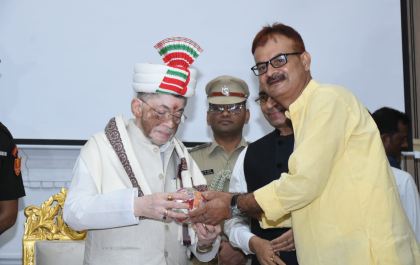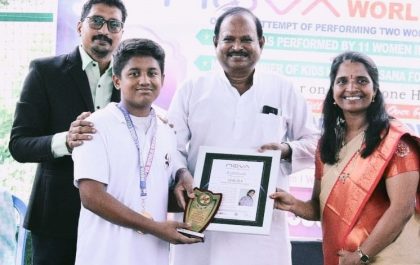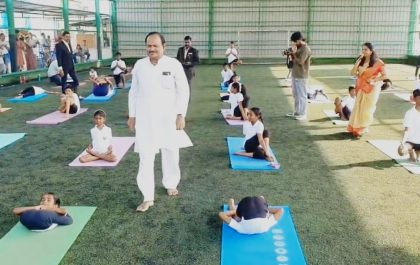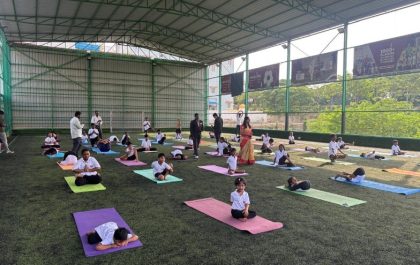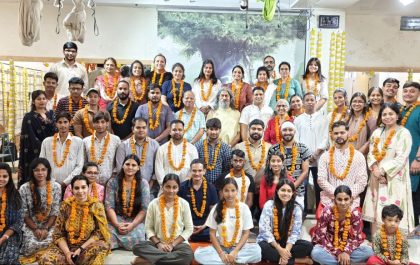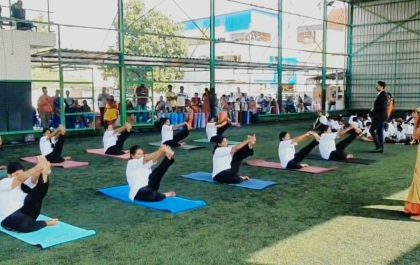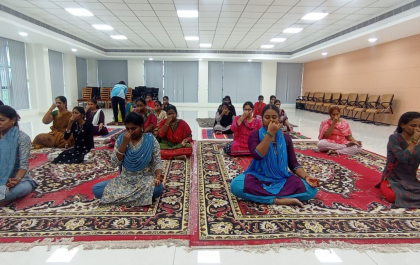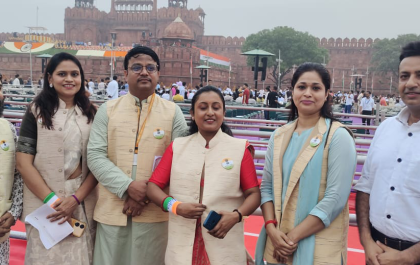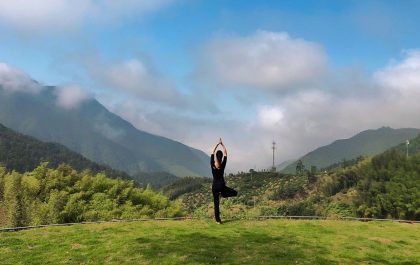by Yogacharini Anandhi Mary Cecil and Yogacharya Dr Ananda
Balayogi Bhavanani, NSHM Campus, Kolkata & ISCM of Sri Balaji Vidyapeeth, Pondicherry
Physics, considered the most foundational of all sciences, seeks to uncover the principles that govern the vast Universe. In the modern era, this quest was notably advanced by Sir Isaac Newton, whose landmark work The Mathematical Principles of Natural Philosophy (1687) laid the cornerstone for classical physics. Newton portrayed the Universe as a vast mechanical system, operating under deterministic laws, emphasizing only physical matter while largely ignoring the subtler, invisible realm of energy and consciousness.
This conceptual divide, separating matter from energy, physical from the metaphysical, gradually led science to disregard the domain of consciousness, spirit and what ancient traditions called chit or pure awareness. However, in the 20th century, this limited worldview was radically upended by the emergence of quantum physics. With its paradoxes and revelations, quantum theory began to resonate, often strikingly, with the timeless insights of India’s yogic seers, who had long explored the inner fabric of reality through direct experience.
Ancient wisdom and the concept of matter
Long before Democritus proposed his theory of indivisible atoms around 400 BCE, Indian sages or rishis, articulated a profound vision of the cosmos in the Vedas and Upanishads. According to Yoga and Sankhya Darsana, all of creation is the interplay (lila) of two fundamental principles: Purusha (pure consciousness) and Prakriti (primordial matter-energy). Matter was never considered inert; instead, it was seen as infused with intelligence, shaped by the interplay of guna (qualities of nature): sattva, rajas and tamas.
These seers intuited that the Universe is not built of solid material components, but is ultimately a field of vibrating energy patterns. The Taittiriya Upanishad describes the layers of human existence from the gross to the subtle: annamaya (physical), pranamaya (vital), manomaya (mental), vijnanamaya (intellectual), and anandamaya (blissful consciousness), a model that aligns remarkably with insights emerging from quantum science.
The double-slit experiment:
A paradigm shift
In 1804, Thomas Young conducted a revolutionary experiment, later hailed as the ‘most beautiful experiment’ in physics. In what came to be known as the double-slit experiment, he demonstrated that light could behave both as a particle and as a wave, depending on how it was observed. When photons were sent through two slits, the resulting interference pattern on a screen suggested that light acted like a wave. But when an observer tried to determine which slit the photon passed through, the interference vanished and light behaved like a particle.
This single experiment unveiled something far more profound. It suggested that the act of observation alters the outcome. It wasn’t merely a study of light. It opened a window into the subtle, perhaps inseparable, connection between consciousness and the fabric of physical reality. Later experiments confirmed that this wave-particle duality wasn’t limited to photons. It extended to electrons, atoms and even molecules. When unobserved, matter behaved like a wave: fluid, non-local and probabilistic. Yet, the moment it was observed, it ‘collapsed’ into a definite form. This phenomenon, known as the collapse of the wave function, revealed a startling truth: consciousness plays a fundamental role in shaping reality.
Quantum insight meets yogic vision
In the 20th century, quantum physics transformed our understanding of matter and energy. Albert Einstein’s equation E = mc² revealed that matter is nothing but energy in a dense form. The implications were nothing short of transformative; at its core everything in the Universe is energy: shifting, vibrating, and interconnected. Matter, mind and motion are all different expressions of one unified field. This revelation resonates deeply with the insights of yogic sages. The Chandogya Upanishad declares, “Sarvam Khalvidam Brahma” – All this is indeed Brahman, the infinite consciousness. In the yogic worldview, drishti (perception) shapes srishti (creation). The world is not merely “out there,” but is intimately connected to the seer, the conscious witness (sakshi).
The Observer Effect in quantum physics directly parallels the yogic teaching that conscious awareness is creative. The external world is not separate from the mind that perceives it. This is the foundation of yogic practices like dhyana (meditation), pratyahara (withdrawal of senses), and samadhi (absorption), through which the practitioner experiences the subtle layers of reality beyond the physical.
Consciousness, not Matter, is the ground of being
Max Planck, the father of quantum theory, once said, “I regard consciousness as fundamental. I regard matter as derivative from consciousness.” Echoing this, modern physicist Richard Conn Henry wrote in Nature, “The Universe is immaterial – it’s mental and spiritual. Live and enjoy.” Such conclusions align with the Indian concept of Chidakasha: the infinite field of consciousness in which all phenomena appear and disappear. According to the Yoga Sutra of Maharishi Patanjali, the world we experience is the projection (vritti) of our own mind. Yoga, therefore, is the method to still the mind’s fluctuations and rest in the pure state of Purusha, unchanging awareness.
Toward a new scientific spirituality
The double-slit experiment and quantum discoveries have not invalidated classical physics; rather, they have expanded its borders. They invite us to revisit ancient Indian wisdom not as mythology, but as intuitive science, a subtle technology of consciousness. Yoga is more than physical exercise. It is a profound science of reality. It prepares the human system, body, breath and mind, to perceive deeper truths. The Rishis did not use particle accelerators, but they refined the inner instrument (antahkarana) to access the subtlest dimensions of existence.
Today, as quantum science increasingly affirms that the observer shapes the observed, the yogic insight that ‘you are not in the Universe, the Universe is in you’ gains renewed relevance. Our consciousness is not a byproduct of matter; rather, matter is an expression within the vast ocean of consciousness.
From Newton’s mechanistic universe to the quantum world of entangled energies and observer-participant realities, modern science is slowly aligning with what Indian rishis realized through deep yogic meditation: that the material world is not the ultimate reality; consciousness is.
In this age of rediscovery, yoga offers not just health and balance, but a bridge between ancient spiritual insight and modern scientific inquiry. As we deepen our yoga practice and still our inner chatter, we begin to touch the truth that sages have always known:
Tat tvam asi, Thou art that.
